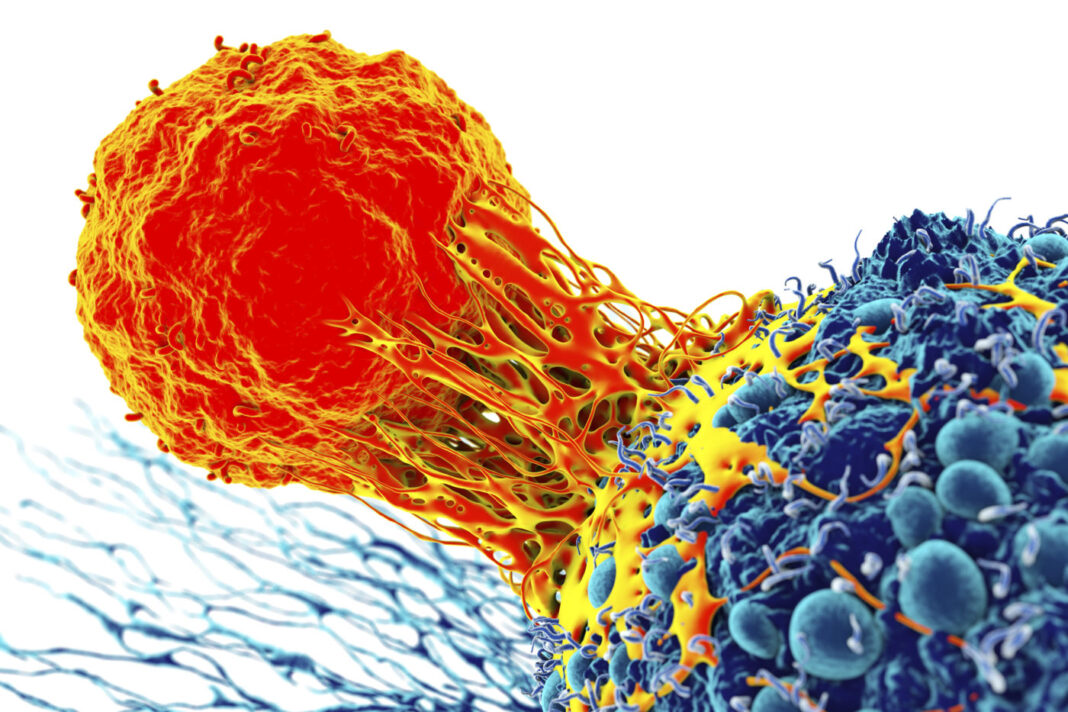CAR-T therapy continues to provide successful outcomes for the treatment of a variety of disorders, in particular, blood cancers such as lymphoma and leukemia. CAR-T therapy modifies a patient’s T-cells by adding a piece of an antibody that recognizes unique features on the surface of cancer cells. Now, a team of investigators at that the University of Illinois (U. of I.) at Urbana-Champaign report that they have dramatically broadened the potential targets of this approach—as their engineered T-cells will attack a variety of solid-tumor cancer cells from humans and mice.
“Cancer cells express on their surface certain proteins that arise because of different kinds of mutations,” explained lead study investigator Preeti Sharma, PhD, a postdoctoral researcher at the University of Illinois at Urbana-Champaign. “In this work, we were looking at protein targets that have short sugar chains attached to them.”
Findings from the new study were published recently in PNAS through an article entitled “Structure-guided engineering of the affinity and specificity of CARs against Tn-glycopeptides.”
Interestingly, the abnormally short sugar chains on some types of cancer cells result from mutations that disrupt the molecular pathway that attaches these sugars to proteins. Drugs that bind to the aberrant sugars preferentially recognize cancer cells and spare healthy cells. CAR-T therapy is a promising treatment for patients with certain types of blood cancers. But identifying binding sites in solid tumors has been more difficult
“A major challenge in the field has been to identify targets that exist on cancer cells in solid tumors that are not present on normal tissue,” noted senior study investigator David Kranz, PhD, professor of biochemistry at U. of I., a member of the Cancer Center at Illinois and an affiliate of the Carl R. Woese Institute for Genomic Biology.
The research team started with a piece of an antibody that could serve as a receptor. The antibody was known to interact with a specific type of abnormally formed sugar attached to a protein on solid-tumor cancer cells in mice.
“We realized that because this receptor binds both to the protein and the sugar on the surface of the cancer cell, there might be room to change the antibody so that it can bind to more than one protein attached to the short sugar,” Sharma said. “This could make it broadly reactive to different kinds of cancers.”
Additionally, the researchers tested whether changes in the sequence of amino acids in the vicinity of the abnormal sugar affected the receptor’s binding to the site. This allowed the team to determine if the antibody could be slightly changed to accommodate other sugar-linked cancer targets. They conducted a series of mutation experiments focused on the essential parts of the antibody
“We conducted a deep mutational scan showing that residues flanking the Tn-glycan contributed significant binding energy to the interaction,” the authors wrote. “Design of 237-scFv libraries in the yeast display system allowed us to isolate scFv variants with higher affinity for Tn-OTS8. Selection with a noncognate human antigen, Tn-MUC1, yielded scFv variants that were broadly reactive with multiple Tn-glycoproteins. When configured as CARs, engineered T cells expressing these scFv variants showed improved activity against mouse and human cancer cell lines defective in O-linked glycosylation.”
“We generated almost 10 million mutant versions of our receptor, and then we screened those to find the property we wanted,” Sharma added. “In this case, we wanted to broaden the specificity of that antibody so that it reacts not only to the mouse target but also to human targets.”
Once they found the antibodies with the desirable traits, the researchers engineered them into T-cells and tested them with mouse and human cancer cell lines.
“Our engineered T-cells are showing activity against both human and mouse cancer cell lines,” Sharma remarked. “And the T-cells can now recognize several different proteins that have short sugars attached to them. This is really important because in cancer therapy, most of the time, you are going after a single target on a cancer cell. Having multiple targets makes it very difficult for the cancer to evade the treatment.”
Kranz concluded that “although these engineered cells are early in development, we are particularly excited that we can use the same T-cell product to study efficacy and safety against cancers in mice and humans.”


